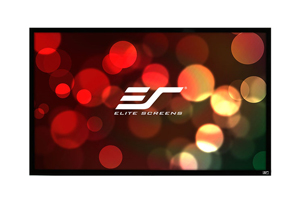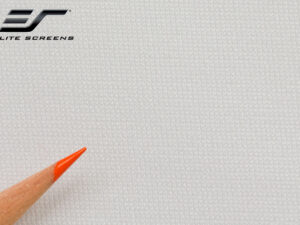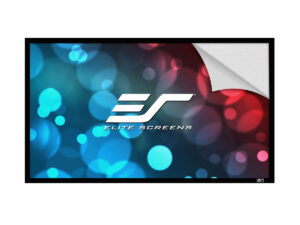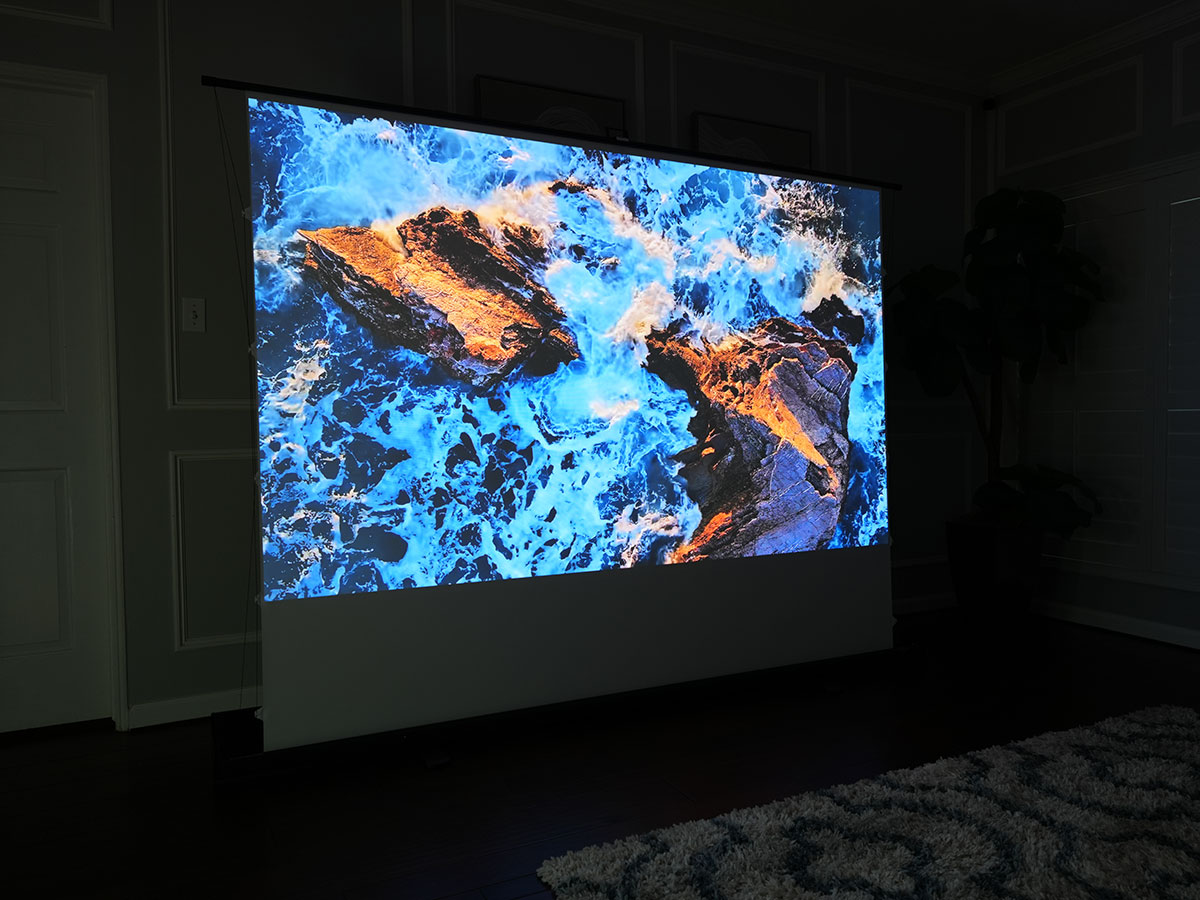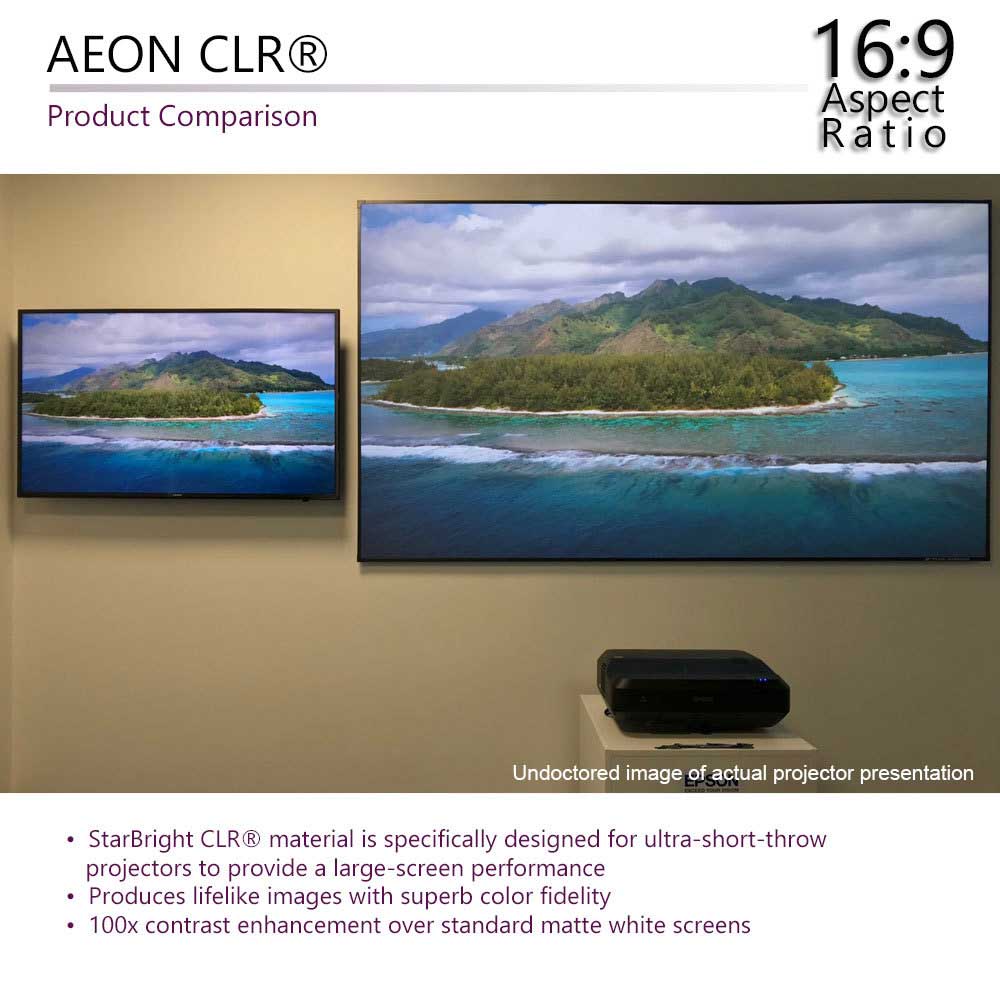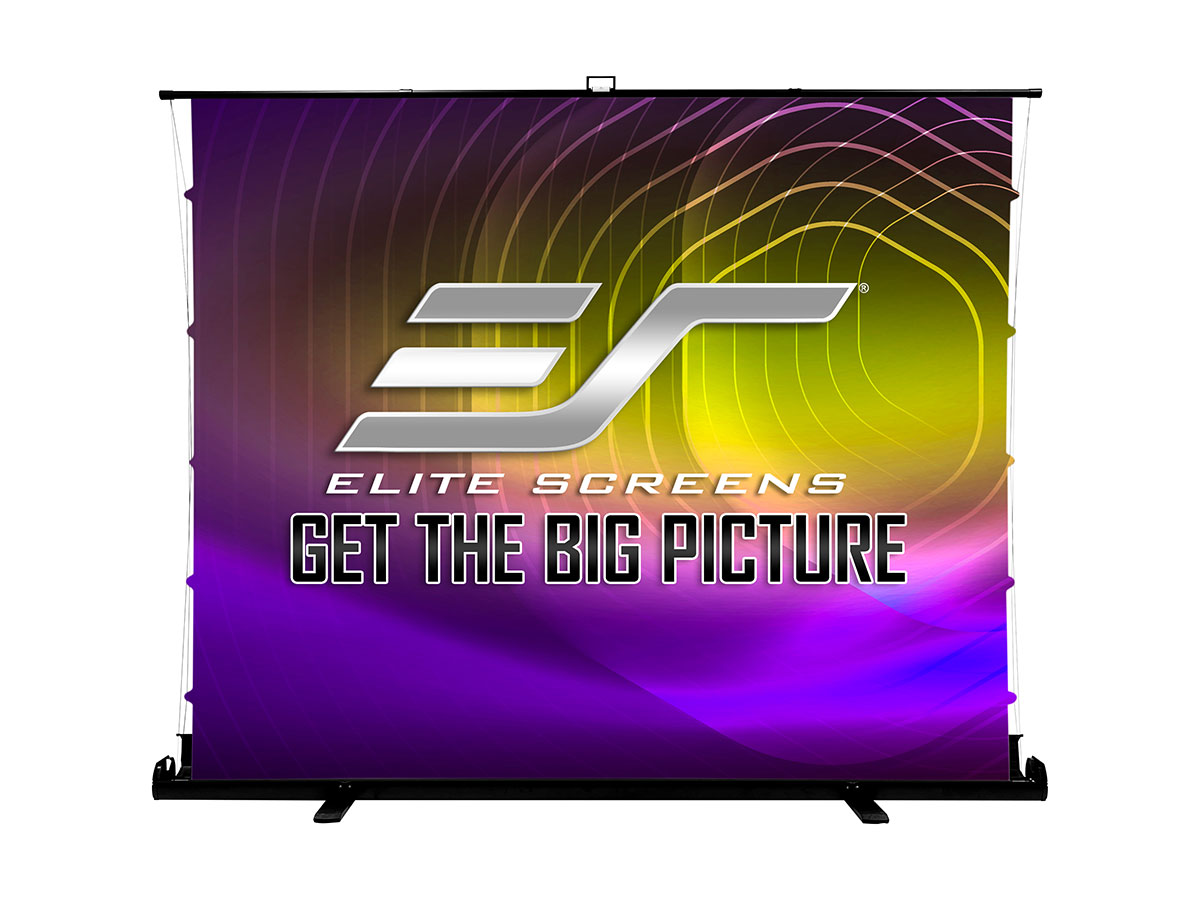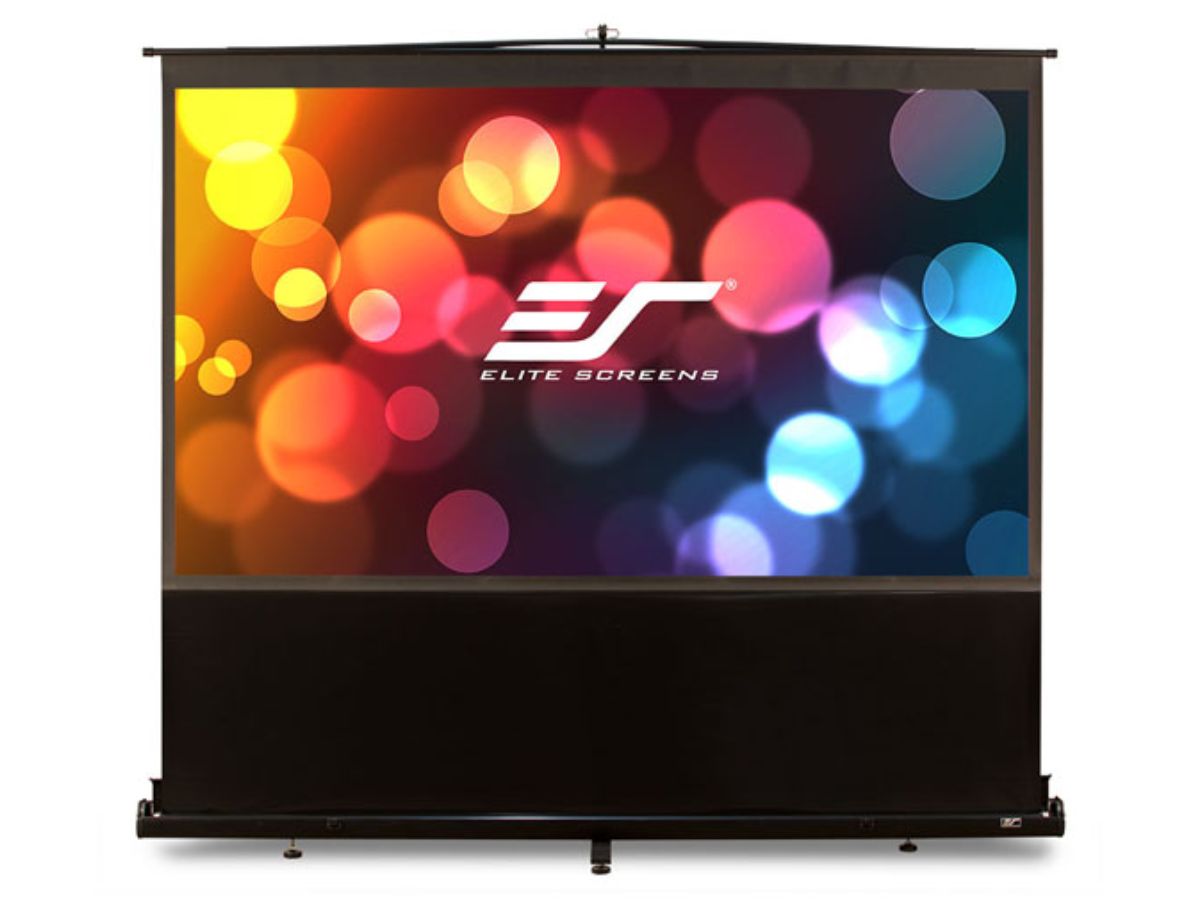Projector Screen Acoustic Transparency
Intro, “When using Projectors and Screens, are you more passionate about the Audio or Visual?”
There are many ways in which AV enthusiasts enjoy their home theater presentations. When referencing audio-visual enjoyment, I like to use the term aficionado because appreciation for the superior performance levels of high definition Audio and Visual gear is every bit as important as savoring a fine wine, relishing a sumptuous meal or enjoying a relaxing massage. If the image does not engage you and its sound quality fails to blend with the visual to a convincing level of authenticity, it simply isn’t worth the measure. Of course picture quality needs to be great. Everything from entry level CE Retail models to the product of high-end manufacturers provide at least 1080P resolution with tolerably good saturation and color temperature. At the time of this article (2016), 4K is becoming the norm and 8K will presumably succeed shortly thereafter. With all these advancements in image brightness, contrast and color, the next question is will a white screen be acceptable or is a specialized material needed to get even more. To many, a contrast-enhancing and/or ambient light rejecting material is precisely the right step towards achieving a sense of visual nirvana. However, there is another point of view on this matter. What about the authentic feel of sound and image coming from the same point of origin in addition to the surround sound just like it does in a movie theater? While ALR and contrast enhancing screens can bring subtle and even extreme improvements to a projected image’s quality, it is not able to provide an image from which the presentation’s sound originates as well. For that, you need an Acoustically Transparent material.
What is Acoustic Transparency?
In the world of projection screens, acoustic transparency or (AT), is the ability for sound to penetrate the screen material with the least amount of attenuation. Attenuation is the reduction in strength of a signal. In this case, the “signal” is the sound quality that is diminished because there is an obstruction (the projection screen) between the speaker and your ears. It is not a case of whether or not the material will diminish sound; it most certainly will. The trick is to create a material that provides a minimal amount of obstruction without compromising the screen’s ability to still present a good image when projected upon.
A good way to understand this is to place your speakers behind a heavy tarp that will physically separate you from the audio “signal” coming from your speakers. You can still hear them but the sound is a little less (or a lot less if you are a true audiophile) than what it sounds like when the tarp is removed. An AT-projector screen is designed to allow sound to breathe through the material with minimal attenuation so that the viewer can enjoy a more authentic experience where the sound actually originates from the images you are watching and the surround sound further resonates the audio into nearly a full sense of immersion. If asked “Which is better; an enhanced image with centerline speakers of an acoustically transparent projection screen?”; its like asking “Which is best, an award winning Merlot or an award winning Cognac?”. In either case you will likely get different answers from different aficionados and in either case, they may hotly contest you if you disagree.
Acoustic Terminology and Their Relevance to Acoustic Transparency
First of all, sound or “acoustics” have both measured and arbitrary properties. Measured properties are factors that can be quantified such as frequency, or atmospheric factors, temperature, pressure, velocity or displacement. Arbitrary features mainly consist of the human factor in which our brains process data (in this case, audible sound) in ways that are slightly different from one another. In other words, our ability to perceive various sounds may be close enough to uniformity but are by no means identical. A great example is how adults gradually lose their ability to hear higher pitched sound frequencies as they age. Here are the basic terms in addition to units of measure that identify sound.
Pitch
When sound originates from a source (ex. diaphragm or stereo speaker), it travels in various wavelengths through various “mediums” (ie. Gases or Liquids such as Air and Water) as oscillations that create vibrations in whatever medium the listener happens to be in. If these vibrations are rapid, it will produce a “high-pitch” or high frequency sound. If the vibrations occur more slowly, it will create a “low-pich” or low frequency sound. These frequencies are more readily identified as “Pitch” and their frequency is measured in Hertz.
Frequency and Hertz
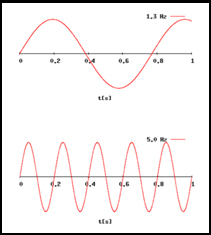
Hertz or (Hz) is an SI unit of measure for the level of frequency per second or the amount of times something happens per second. Since we are discussing sound, a sound wave that occurs at a frequency of 15 times per second has a frequency of 15Hz. A sound wave that occurs at a frequency of 15,000 times per second has a measurement of 15,000Hz or 15 “kilohertz” or kHz. The images shown indicate what 1.3Hz (1.3 waves per second) and 5Hz (5 waves per second) look like when measured. The human ear can generally hear the acoustic frequencies between 20Hz and 20kHz.
Duration
The length of a sound at a specific frequency or “musical note” is known as the “duration”. While pitch determines how high or low the note is; duration determines how long it lasts.
Loudness
This is also known as amplitude. This is a measure of the intensity or energy driving the sound. A good comparison is to correlate the difference between a kitchen sink and Niagra Falls.
Timbre
Also known as “tone color”, the timber is what distinguishes various points of sound origin such as musical instruments, creatures, mechanical sounds, or human voices apart from one another even when they share the same pitch and loudness.
Sonic Texture
Sonic texture identifies the various rhythms in which sound occurs as well as how various sounds come together and harmonize over a shared measurement of time.
Spatial Location
Spatial location represents the actual location of a point of sound origin in an audible environment. Picture standing in the middle of a loud room full of people; suddenly a woman in the south-east corner of the room laughs loud enough for you to hear over the din of all the other noise. Your ability to identify the direction from which you hear the laughing woman and generally determine her environmental location is defined as “spatial location”.
The Acoustically Transparent Screen’s Performance
This is an introductory discussion setting up your acoustic screen with speakers. There is a lot more to know about this subject but this section but here are the basics.
Attenuation, (the measured reduction in sound as it passes through the screen) is often gathered from the high-pitch range (8-20 kHz) since it is the high pitch that is the most greatly affected by attenuation. However, many audio purists prefer to measure the mean of the full 20Hz to 20kHz spectrum of audible frequencies. Regardless of whichever frequency range means you prefer to evaluate, the generally acceptable degree of reduction is -3dB to -4dB. Therefore, an acoustically transparent material that can adequately present a good projected image with excellent saturation, contrast, and color temperature levels while maintaining these levels of “minimal attenuation” will be appropriate for the most top-tier installations.
*Expert’s notes:
Projected light passes through AT materials and will light up everything behind your screen if your wall and speakers are not properly blacked. This artifact is known as “backlighting”. For this reason, many installations rely on an acoustically transparent black cloth installed between the speaker and the screen material. The drawback is that some of these “black backing” or “backing screens” is that they may contribute up to -10dB attenuation in addition to your screen. Although it is good to have a black cloth backing to eliminate backlighting, you don’t want your sound quality diminished to a point to where it’s not to your satisfaction. For this reason, try to make sure that the backing screen material has reasonably low attenuation or better still, make sure that your wall and speakers have been properly blacked (professionally, not amateurishly and don’t even think about painting your drivers. Also, it is best to have some sort of dark acoustic damping on the wall behind the screens surrounding the in-wall speakers.
Final Notations
You may have noticed that I gave no reference to visual artifacts and I did so for a good reason. This article is meant as an overall introduction to the properties of acoustically transparent projection screen materials with the assumption that the material is not visually defective and being used with a compatible projector. That being said, here are descriptions of the most common visual artifacts associated with acoustically transparent screen materials in addition to solutions.
- Moiré effect: This is often described as looking like seeing a screen door’s mesh through another screen door’s mesh. It has a distorted cross-hatched effect over your projected image. It occurs if either the pores of your acoustic material are incompatible with the projector’s high resolution levels or the angle of your AT screen’s mesh is set at the wrong angle. The solution is to either correct the AT material’s orientation or acquire a lower resolution projector.
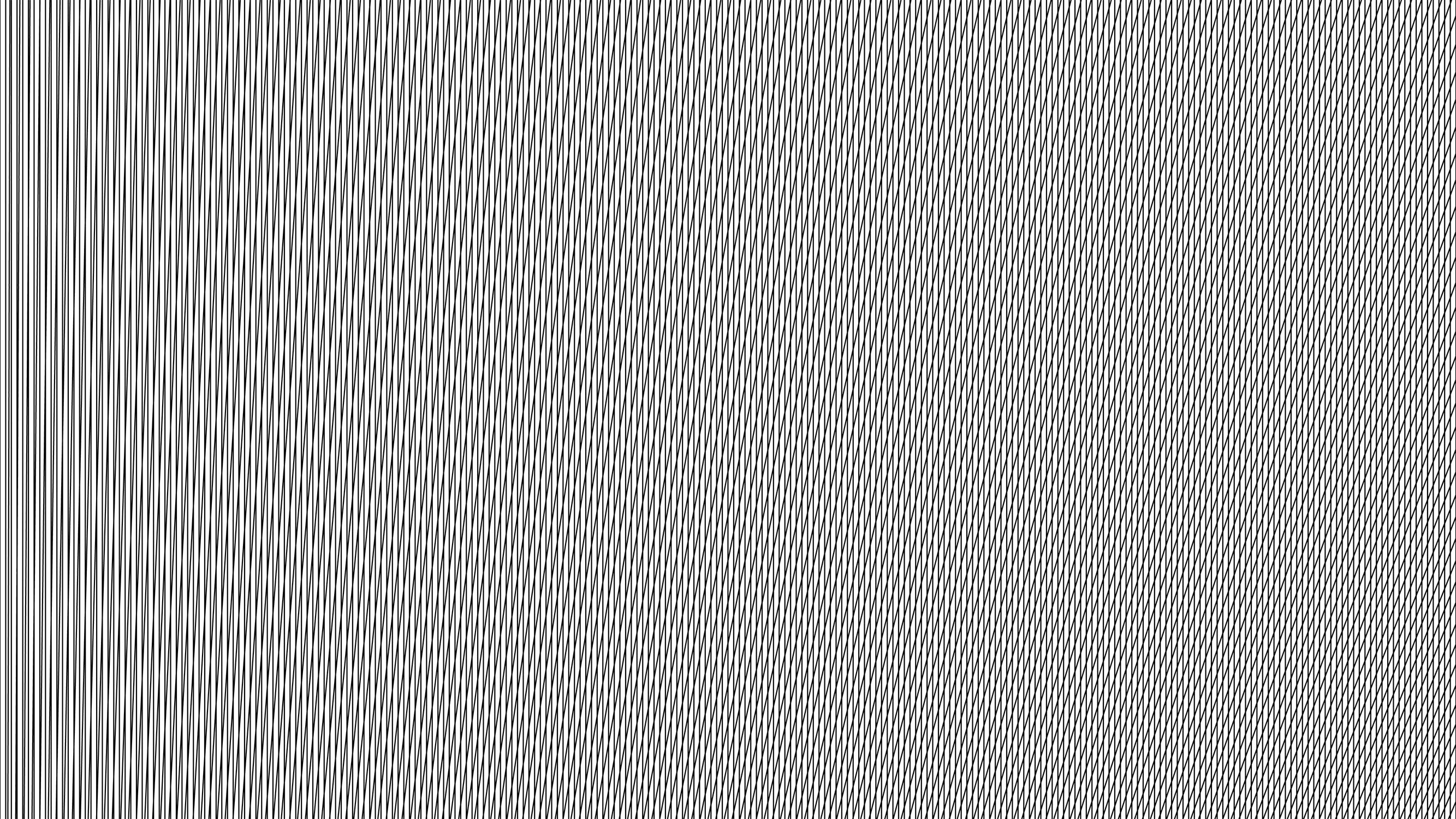
- Backlighting: This is when the projected light passes through your AT material and illuminates anything behind your projection screen so that it is visible to the viewer. The best correction is to either acquire a good acoustically transparent black-colored screen backing. Another way is to make sure that the only things behind the screen are the wall and speakers, and that they are treated to be a flat matte black that will not reflect back through the material.
- Image Softness: Some AT materials are too textured to accommodate the sharper contrast of today’s UHD / 4K projectors. A textured material prevents the higher resolution details from being presented with full clarity. Although I call this an artifact, many viewers are not really bothered by this particular phenomena. However, if you share my consternation with image softness, I recommend seeking out a more finely woven AT material with pores that are virtually invisible to the naked eye.
Remember that your audio-visual experience should pleasurably feed the senses in a way that is no different from savoring a fine wine or enjoying the ambrosial effects of an excellent meal. This is your AV system. Don’t let your enjoyment end at the dining table; bathe your senses in effects of a bold, crisp image and clear enrapturing sound.
-DR
*Note: Special thanks to Gerald Lemay of Home Acoustics Alliance for his time and contribution to this module.
Elite Product Introduction: AcousticPro 1080P3
The AcousticPro1080P3 is an acoustically transparent front projection material that is available on both our Sable and ezFrame fixed projection screen configurations. The angular weave eliminates the moiré effect while presenting superb color balance for today’s high definition 1080P (1920×1080) projectors. The AcousticPro1080P3 allows speaker placement behind while permitting an exceptional degree of acoustic transparency with minimal attenuation by maintaining a mean attenuation of -3.09 dB.
